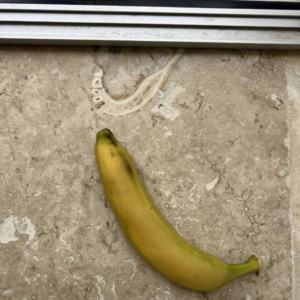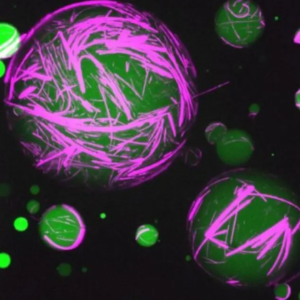Submerged beneath layers of sand, Ancient Egypt’s passage to the Mediterranean serves as a haunting reminder of cities’ vulnerability to nature’s whims.
For centuries, Hapy, the god of fertility and guardian of the river, stood vigilantly at the edge of ancient Egypt, overseeing the bustling trade routes from the Mediterranean. His imposing figure, carved from red granite, marked the entrance to one of the world’s greatest port cities.
However, towards the end of the second century BC, disaster struck. A tremor shook the ground beneath Hapy’s feet, causing the earth to churn and liquefy. In a tragic moment, six tonnes of intricately carved stonework tumbled into the sea, signaling the beginning of the city’s demise.
Over time, the entire settlement, steeped in legend and history, succumbed to the sea’s embrace, swallowed by layers of sand and silt. But in the early 2000s, a group of divers made a remarkable discovery off the Egyptian coast: fragments of Hapy’s statue, along with a trove of other artifacts.
Aurélia Masson-Berghoff, curator of the Sunken Cities exhibition at the British Museum, reflects on the significance of the find: “Discovering a whole city, which was home to thousands of people over more than a thousand years … That’s something else.”
This lost city, known as Thonis-Heracleion, is now resurfacing after more than a millennium underwater. Unlike legendary cities like Babylon or Pompeii, Thonis-Heracleion had faded from memory until recent discoveries brought its story to light once again.
In its heyday, Thonis-Heracleion was a bustling hub of trade and culture, attracting merchants, sailors, and scholars from across the ancient world. Situated across a network of islands, sandbanks, and marshlands, the city served as Egypt’s vital link to the Mediterranean and the western world at large.

Established approximately 2,700 years ago in what is now Abu Qir bay, just 15 miles northeast of Alexandria, Thonis-Heracleion predates its more famous neighbor as the primary trading port for the region by several centuries. It thrived as a bustling hub of international commerce.
The city was crisscrossed with canals and dotted with harbors, wharves, temples, and tower-houses, all interconnected by ferries, bridges, and pontoons. Thonis-Heracleion controlled the majority of maritime traffic entering Egypt from the Mediterranean. Goods were inspected and taxed at the customs administration center before being distributed further inland, either at Naukratis, another trading port located nearly 50 miles up the Nile, or via the Western Lake, which connected to the nearby town of Canopus, providing access to various parts of the country.
Despite being mentioned by ancient chroniclers such as Herodotus, Strabo, and Diodorus, much of the detailed knowledge about Thonis-Heracleion and Canopus had been thought lost to history.

Before 1933, historians had long regarded Thonis and Heracleion as separate cities on the Egyptian mainland. However, when an RAF commander spotted ruins in the waters of Abu Qir, offshore research took a new turn. By the early 2000s, a team from the European Institute for Underwater Archaeology had created detailed maps of the region’s ancient topography, using advanced survey techniques.
The murky waters and low visibility posed challenges for underwater excavation. Side-scan sonar was employed to map the ocean floor’s depth variations, while a nuclear magnetic resonance magnetometer identified geological fault lines and large objects. Scuba divers used water-dredges to remove sand and expose archaeological layers, uncovering items like building fragments, colossal statues, goblets, figurines, and sarcophagi.
Each artifact was meticulously cataloged, photographed, and analyzed aboard the research boat Princess Duda before further study on land. These discoveries have revolutionized our understanding of Thonis-Heracleion and its relationship with the Hellenic world.
Among the finds is the Decree of Sais, a black stele with hieroglyphics dating to the early fourth century BC, found at a temple dedicated to the Egyptian god Amun-Gereb. This stele sheds light on Egyptian taxation practices and confirms that Thonis and Heracleion were not two distinct towns but one city known by both its Egyptian and Greek names.
The artifacts recovered from Thonis-Heracleion illustrate the cultural interchange between Pharaonic and Greek societies, with Hellenic and Egyptian artifacts coexisting on the seabed, including helmets, statuettes, incense burners, perfume bottles, and ancient anchors.

I’m sorry for the confusion earlier. I can definitely help with rewriting the passage you provided. Here’s a revised version:
“During the rise of the Ptolemaic dynasty in Egypt, the blending of cultures was prominently displayed, especially in religious practices. Foreign rulers, aiming to validate their authority among the Egyptian populace, embraced Pharaonic traditions.
Among the discoveries from the depths is a 2,000-year-old stone figurine depicting Cleopatra III as the Egyptian goddess Isis, showcasing a fusion of local and Hellenic artistic styles. Thonis-Heracleion’s artifacts reveal intriguing glimpses into the city’s recreational activities.
The annual celebration of the Mysteries of Osiris, a widely observed ritual in ancient Egypt, involved crafting two figures of Osiris—one from soil and barley, the other from precious stones. In Thonis-Heracleion, the former was nurtured in a granite tank with Nile water before joining a procession of papyrus barges illuminated by 365 oil lamps, symbolizing each day of the year, en route to Canopus.
Archaeologists have also unearthed an 11-meter sycamore vessel and numerous lead replicas of papyrus boats, offered by spectators as votive offerings.
These discoveries offer a rare insight into ancient rituals, connecting us to the tangible aspects of religion in Thonis-Heracleion. While the artifacts retrieved from Abu Qir bay tell a remarkable tale of a city that could have faded into obscurity, it remains a narrative with gaps, a reminder of the selective nature of historical interpretation.”

“My hope is that future discoveries will enable us to shed more light on the lives of ordinary people,” says Masson-Berghoff, who points out that while we know more than ever about Thonis-Heracleion’s rulers and priests, it is much harder to picture the mudbrick homes and daily lives of those who served them and kept the busy port operating smoothly.
Today, 95% of the area’s urban footprint remains to be explored; perhaps there are objects yet to be found that can enrich our understanding of how cargo unloaders, cleaners and cloth-sewers experienced their city. “What we know now is just a fraction,” observes Franck Goddio, director of the ongoing excavations. “We are still at the very beginning of our search.”
By the second century BC, Thonis-Heracleion’s era of pomp and prestige was already fading. Further along the coast, the new metropolis of Alexandria was rapidly establishing itself as Egypt’s preeminent port, while the hybrid foundation of land and water upon which Thonis-Heracleion was built had begun to feel less secure. It wasn’t a single natural disaster – an earthquake, tsunami, rising sea levels, or subsidence – that doomed the city, but rather a combination of them all.

Lost cities #7: how Nasa technology uncovered the ‘megacity’ of Angkor
Read more
At the end of the century, probably after a severe flood, the central island – already sagging under the weight of the main temple buildings – succumbed to liquefaction. In what must have been a terrifying experience, the hard clay soil turned to liquid in moments and the buildings atop it collapsed swiftly into the water. The supply of pottery and coins into Thonis-Heracleion appears to have ended at this point; a few hardy residents clung on to their homes throughout the Roman period and even into the beginning of Arab rule, but the last vestiges of the city sunk below the sea at the end of the eighth century.
At a time of looming ecological catastrophe, it is perhaps unsurprising that we should find the tale of Thonis-Heracleion so fascinating. Its rediscovery is a testament to advanced technology and human ingenuity, but the city’s fate – and the eerily inanimate memories of a long-forgotten urban life left behind – are a reminder of how fragile many of our own contemporary cities are.
Venice, arguably Thonis-Heracleion’s closest modern cousin owing to its siting on a lagoon and its famed network of waterways, is sinking; Egypt’s Mediterranean coastline remains one of the places on earth most vulnerable to rising sea levels, and even the most optimistic projections of global temperature increases could still displace millions in the region from their homes.
Hapy’s reawakening from the seabed, a millennium in the making, is a unique window to our urban past. The struggle continues to ensure he and his city are not also a vision of our future.
News
WNBA Fans Buzz Over “Anne Splashaway” Nickname for Caitlin Clark
Upon witnessing Caitlin Clark’s three-point prowess during the Indiana Fever’s training camp, a WNBA fan took to social media to coin a creative nickname for the 2024 WNBA Draft’s top pick. Inspired by Clark’s sharpshooting skills, the fan cleverly dubbed…
“It wasn’t like this”: Angel Reese notes Clear Distinction in quality between NCAA and WNBA
Angel Reese, a standout college star and 2023 NCAA champion, made waves in the 2024 WNBA draft when she was selected by the Chicago Sky as the seventh overall pick. Since joining the team, Reese has been fully committed to…
“No deposit, no return mindset”: Indiana Fever Coach Establishes Standards for Caitlin Clark, Aliyah Boston, and Co Prior to Season Opener
All eyes are fixed on the Indiana Fever ahead of the 2024 WNBA season, following their acquisition of the highly coveted consensus number one overall pick, Caitlin Clark, in the 2024 WNBA draft. Amidst heightened expectations, head coach Christie Sides…
Dentist Finds What May Be A Prehistoric Human Jawbone Embedded In His Parents’ New Floor
The discovery of a human mandible embedded in travertine flooring during a home renovation in Europe has sparked curiosity and raised questions about its origins. The mandible was noticed by the homeowner’s son, a dentist, who recognized its unmistakable shape….
Researchers Have Successfully Created Artificial Cells That Act Just Like Human Cells
The University of North Carolina at Chapel Hill researchers have achieved a significant breakthrough in biotechnology by engineering artificial cells with life-like behavior using DNA-peptide technology. In their experiment, the team manipulated peptides and genetic material to create cell cytoskeletons,…
LA Sparks 1st Rounder Cameron Brink and Mother Groove to GloRilla’s Beats in Latest TikTok, Sporting $8,600 Hermes Bag
Cameron Brink shares a close bond with her mother, Michelle, often showcased on social media. Recently, they posted a TikTok video dancing to the rhythm of rapper GloRilla’s “Yeah Glo!” In the clip, the former Stanford standout was spotted accessorizing…
End of content
No more pages to load











